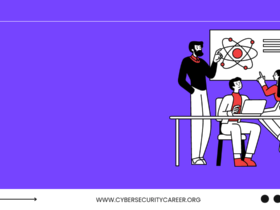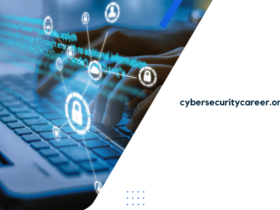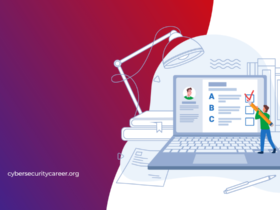Cyber security zero trust seeks to replace the traditional perimeter defense model of security with an approach that better safeguards organizations against modern IT threats.
Organizations must implement a continuous access verification process that considers risk factors and detects suspicious network activity, so permissions will only be granted once they’ve been confirmed.
Identity & Access Management
Identity & Access Management is at the core of cyber security zero trust, helping protect data, applications, resources, and users that both humans and non-humans rely on for their jobs. IAM regulates authentication and permissions of digital resources such as servers, systems, applications networks hardware software. Furthermore it facilitates access controls which limit which users, devices or locations may connect.
Identity and access management solutions also play a pivotal role in compliance and training – helping employees navigate technology effectively while remaining secure so that they can contribute positively to an organization.
IAM can also help manage and control privileged accounts, which give access to sensitive data and systems. It is crucial for organizations to identify their most critical privileged accounts and take measures to secure them as part of a zero trust security strategy.
Implement least privilege controls on human and non-human identities, applications, services, machines, vendors and vendors while providing adaptive access controls based on users’ location, time, device or other contextual factors. These features can be especially valuable in cloud or hybrid environments where multiple access devices or machines could present challenges to traditional centralized authentication and access control methods.
Organizations that implement multi-factor or two-factor authentication (MFA) solutions for logins also reduce their attack surface. MFA solutions can also be combined with adaptive authentication techniques that take into account the context of each login attempt and adjust password or token changes accordingly.
Many organizations have implemented single sign-on to reduce user effort in accessing multiple systems and devices; however, such systems are still susceptible to cyber security threats such as password breaches.
Organizations can protect themselves from these vulnerabilities by using granular least privilege and adaptive capabilities to secure privileged accounts that are used for high-risk operations like managing sensitive information and infrastructure. Such solutions can enforce credentials and privileged account policies across their enterprise, the cloud and endpoint devices.
Threat & Vulnerability Management
As modern cybersecurity becomes more complicated, the necessity of developing secure infrastructures such as firewalls, perimeter defenses and other measures to guard data against external threats becomes ever more urgent.
Cybersecurity also involves safeguarding sensitive information within an organization, which means ensuring employees can access and use data, applications and services safely.
Security practices that adhere to best security practices – such as using configuration policies and specifications to harden IT infrastructure against both external and internal threats – allow IT security teams to create a secure perimeter around networks or systems and prevent attackers from exploiting vulnerabilities through exploiting vulnerabilities within them. Such policies and specifications must adhere to industry best practices such as Center for Internet Security benchmarks or National Institute of Standards and Technology recommendations.
But these security configurations should not serve as the only cornerstone of an effective threat and vulnerability management program; rather, they must form part of an overall strategy which includes identity and access management, continuous access verification, threat detection and mitigation, etc.
Start out right: to achieve successful threat and vulnerability management programs requires on-going security assessments. This assessment process should involve inventorying assets with their associated vulnerabilities as well as categorizing, evaluating, and prioritizing those vulnerabilities according to organization priorities.
Utilizing vulnerabilities to identify potential threats and attack strategies is one of the key tasks in threat and vulnerability management life cycle. Once discovered by IT security professionals, third-party vendors, or IoT sensors, these vulnerabilities should be evaluated using cyber threat intelligence in order to evaluate their severity, likelihood and impact on an organization.
Once vulnerabilities have been categorized and evaluated, they should be addressed by IT security team as part of an organization’s risk management strategy. This process could involve assessing risks associated with each vulnerability as well as assigning severity scores and providing remediation resources where necessary.
No matter the approach taken, an effective threat and vulnerability management program is vital for protecting organizations’ critical data and resources. A quality program should be intelligence-driven, seamless, and continuous to enable IT security teams to analyze, prioritize and resolve security issues most efficiently – thus providing organizations with quick responses to potential vulnerabilities while mitigating any business risks that arise from potential vulnerabilities.
Identity & Access Governance
Identity & Access Governance (IGA) is a key part of any cyber security zero trust strategy. IGA gives businesses tools for automating and managing user accounts and access rights – helping enforce your IAM strategy from the moment someone logs in to their company account.
IAM technology enables organizations to automate and centrally manage users’ digital identities and access rights within their organization’s network, enabling them to work on multiple systems, applications and resources simultaneously. Furthermore, this solution allows administrators to make changes or modify privileges as required, or even disable users when their usage of an application no longer aligns with your identity management strategy.
Privilege access management has long been a core component of IAM, yet due to modern threats and regulatory compliance requirements, security teams need to extend their controls beyond the point of access into systems. A “never trust, always verify, enforce least privilege” approach must be applied both inside and outside networks when controlling access privileges for privileged accounts.
Adaptive controls provide a solution that adapts their behavior depending on risk context. By distinguishing friends from foe, we are able to more efficiently detect cybercriminals masquerading as valid users and reduce any associated risks.
Adaptive control ensures we can detect and respond to cybercriminal attacks without disrupting user experiences or workflow. This involves continuously verifying access, limiting “blast radius” impact in case of attacks, and monitoring user activity across applications and devices.
As part of your cybersecurity strategy, IGA can reduce the risk of data breaches and compliance violations by automatically reporting user activities into a central repository. It provides visibility into accounts that have been compromised or toxic access combinations that violate separation-of-duties policies as well as enable auditing access compliance and identity management processes.
Ubisecure Identity Platform supports all access management requirements ranging from cloud to on-premises, for all kinds of users – employees, contractors, partners and customers alike. This powerful solution helps organizations achieve Zero Trust by balancing security with user experience and risk tolerance – protecting networks, assets and customer data against threats that emerge regularly.
Continuous Access Verification
Continuous Access Verification is an integral component of cyber security zero trust, combining user behavior analysis, biometric information and contextually-related data to authenticate users in real time as they work – helping reduce risks related to hacking, careless employees and malicious insiders (or former employees with grievances against your organization).
Identity & Access Management traditionally relies on single authentication measures to verify whether users are who they say they are, which makes it difficult to detect if any are trying to gain entry using someone else’s credentials or are fraudulently trying to gain entry to systems using someone else’s ID credentials.
Microsegmentation is another key aspect of the zero trust model, serving to prevent lateral movement between zones within the network once an attacker gains entry. This makes it harder for cyber attackers to remain hidden while trying to penetrate new parts of it without detection.
As risk landscapes shift, organizations are finding it increasingly challenging to implement and manage traditional network based segmentation techniques. This is particularly evident as workloads, users, and data continue to migrate throughout their enterprise.
Organizations must instead implement a risk-based dynamic policy model that constantly evaluates risk levels and authenticates access to resources as circumstances evolve. A solution capable of dynamically adapting policies without negatively affecting user experiences must also be available.
Solution providers must also incorporate robust multi-factor authentication, such as phish-proof MFA and secure web gateway (CASB), into their solutions, which can prove challenging as many CASB vendors do not include multi-factor authentication features within their solutions.
To address these problems, a security solution that incorporates both continuous authentication and MFA can be the perfect complement to an organization’s zero trust strategy. Such a security solution allows businesses to more quickly detect unauthorized access while differentiating between valid users and malware-like bots that try to take advantage of stolen or compromised credentials.
Continuous authentication provides numerous benefits beyond risk reduction, including improving user experience by enabling them to log in once and not have to reauthenticate every time they switch applications – reducing disruptions while helping authorized users focus on their jobs more easily.










Leave a Reply